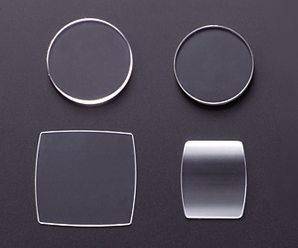While Corning’s Gorilla Glass is used for the screens of more than 1.5 billion devices worldwide, a new challenger is coming into view: a synthetic sapphire crystal screen.
Apple is reportedly making a synthetic sapphire display for its new iPhone 6 expected to be released this September, and Japanese electronics maker Kyocera recently announced that its “Sapphire Shield” will soon be available for use on Android.
Sapphire displays are synthetic versions of the naturally occurring crystal, commonly thought of as a blue gemstone — although sapphire takes on many different colors in nature. (For instance, a ruby is really a red colored sapphire.) Engineers have figured out a way to make a synthetic version of sapphire that is clear and extremely durable. The material is already being used on luxury watches, and Apple uses the material for the camera and home button on the iPhone 5. But the iPhone 6 will be the first widespread use of synthetic sapphire on smartphone screens—that is unless Kyocera helps another device manufacturer beat Apple to the punch.
Videos claiming to be testing a real iPhone 6 sapphire screen have popped up on the Internet, showing that hardly anything will break or even scratch the crystal display. However, a couple of Chinese testers did succeed in shattering the cover, but only by running a car over it.
For its part, Corning seems unworried about the challenge of sapphire. James Steiner, who leads the company’s specialty materials segment posted a statement on the Corning website claiming that Gorilla Glass is still tougher than sapphire.
“Sapphire’s performance as a cover for high-end watches probably leads to the current speculation. But those covers are much smaller than a mobile phone and are two to three times thicker than Gorilla Glass,” Steiner said. “In one of our commonly accepted strength tests, sapphire breaks more easily than Gorilla Glass after the same simulated use. Additionally, sapphire’s cost and environmental hit are huge issues.”
According to Corning, manufacturing Gorilla Glass costs one tenth of what it costs to make synthetic sapphire crystal, which also requires significantly more energy—as much as a 100-times more than Gorilla Glass.
A lot remains to be seen and proven. Kyocera has more than 41 years working with synthetic sapphire and claims that its Sapphire Shield is affordable. But the company has not yet released any specific information beyond its rather enigmatic general announcement.
In the meantime, Corning says it will continue to innovate. “We are not standing still,” Steiner said. With the trend-setting Apple adopting sapphire and Kyocera planning to supply it to other device makers, Corning can’t afford to.

Sapphire crystal could present tough challenge for Gorilla Glass
ABOUT AUTHOR
